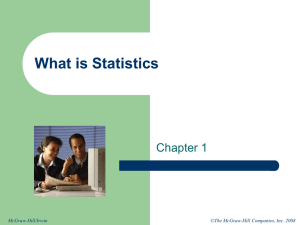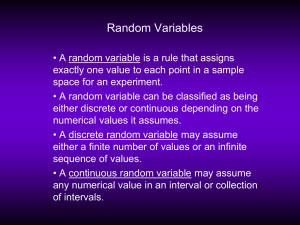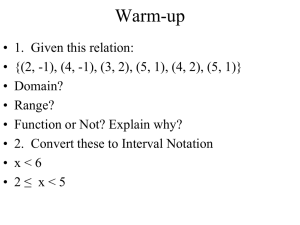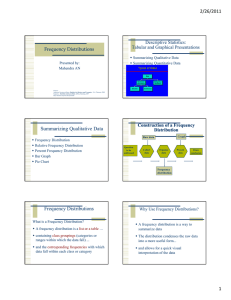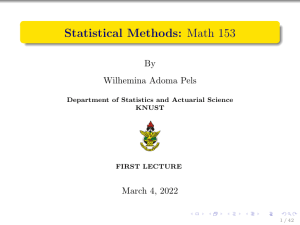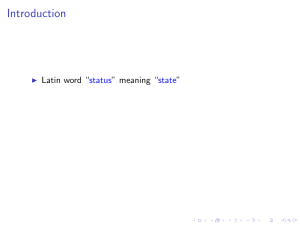Review
advertisement
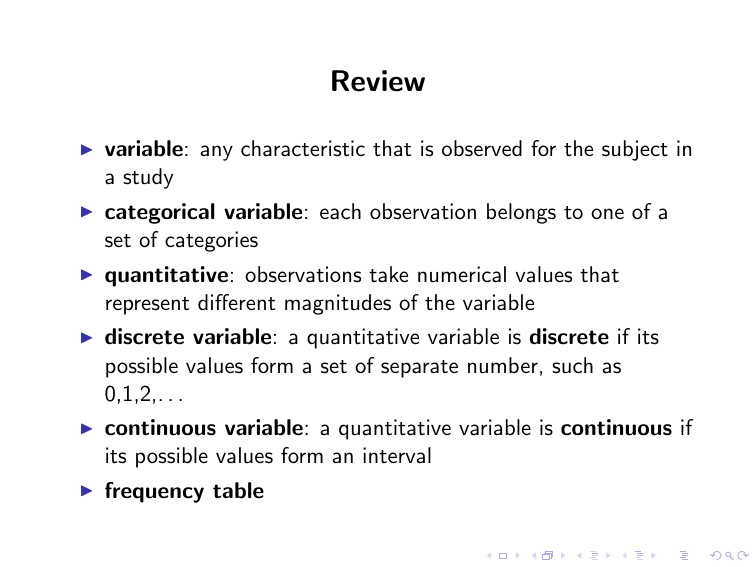
Review I variable: any characteristic that is observed for the subject in a study I categorical variable: each observation belongs to one of a set of categories I quantitative: observations take numerical values that represent different magnitudes of the variable I discrete variable: a quantitative variable is discrete if its possible values form a set of separate number, such as 0,1,2,. . . I continuous variable: a quantitative variable is continuous if its possible values form an interval I frequency table I mode: the category with the highest frequency I Dot Plots I Stem-and-Leaf Plots The article ‘‘Effects of Aggregates and Microfillers on the Flexural Properties of Concrete’’ reported on a study of strength properties of high performance concrete obtained by using superplasticizers and certain binders. The accompanying data on flexural strength (in MPa) appeared in the article cited: 5.9 7.2 7.3 6.3 8.1 6.8 7.0 7.6 6.8 6.5 7.0 6.3 7.9 9.0 8.2 8.7 7.8 9.7 7.4 7.7 9.7 7.8 7.7 11.6 11.3 11.8 10.7 stem 5 6 7 8 9 10 11 | | | | | | | | leaves (leaf unit: .1) 9 33588 00234677889 127 077 7 368 I Histograms: a graph that uses bars to portray the frequencies or the relative frequencies of the possible outcomes for a quantitative variable Construct a Histogram: 1. Divide the range of the data into intervals of equal width. For a discrete variable with few values, use the actual possible values. 2. Count the number of observations (the frequency) on each interval, forming a frequency table. 3. On the horizontal axis, label the values or the endpoints of the intervals. Draw a bar over each value or interval with height equal to its frequency (or percentage), values of which are marked on the vertical axis. I Unimodal I Bimodal I Outliers
